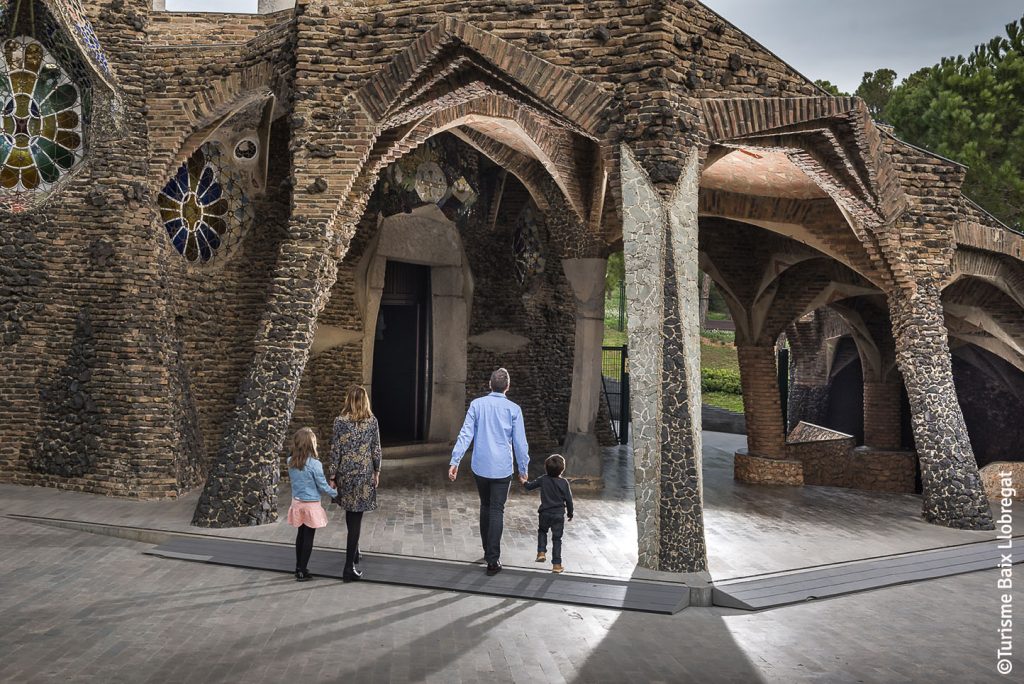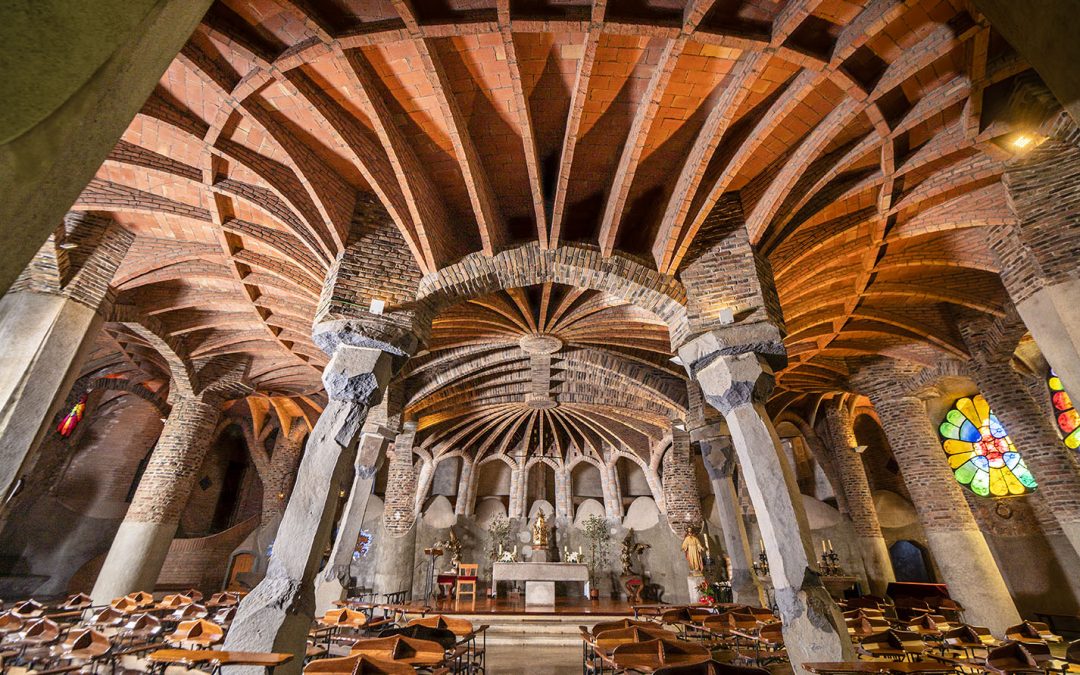The Colonia Güell crypt is a true marvel, a masterpiece by Antoni Gaudí
Colonia Güell is a small industrial colony located in Santa Coloma de Cervelló, just 20 minutes by car from Hotel Continental.
An industrial colony is a set of facilities connected to a factory located away from urban centers. Owned by the company, it provides everything necessary for the daily life of its workers: housing, church, school, company store, park, and other shared spaces.
Colonia Güell is well known for its remarkable modernist architecture and its significance as a tourist attraction in Catalonia. Founded in 1890 by the industrialist Eusebi Güell, the colony was originally established as a refuge from the urban social unrest in Barcelona at the time. It hosted Güell’s textile factory alongside various social and cultural amenities for the workers.
It is just 20 minutes away by car and also accessible in about 50 minutes by metro (FGC). You can find all the practical information —schedules, how to get there, guided tours, prices, and recommended restaurants—at this link.

Discover the history and architecture of Colonia Güell
The Colony
Eusebi Güell envisioned Colonia Güell as a model of a self-sufficient industrial community. It included workers’ housing, schools, hospitals, shops, theatres, a cooperative, and a chapel designed by Antoni Gaudí, reflecting an early commitment to social welfare and improved working conditions.
After Count Güell’s death in 1918, the project was left unfinished. During the Spanish Civil War (1936–1939), the factory was collectivized, and later returned to the Güell family. After the factory closed in 1973, the properties were sold to businesses and residents, and in 2000 restoration efforts began to transform the site into a business park, now home to several companies.
Gaudí’s Crypt in Colonia Güell
A major highlight is the Crypt of Colonia Güell, designed by Antoni Gaudí. Commissioned by Eusebi Güell in 1898, construction began in 1908 with an ambitious design including two naves, side towers, and a 40-meter-tall central dome. However, the project was halted in 1914 due to the Güell family’s decision to cut funding. The lower nave was blessed in 1915 and completed between 1915 and 1917 by another builder. Despite being unfinished, the crypt includes many of Gaudí’s architectural innovations. In 2005, UNESCO declared it a World Heritage Site.

The Factory and Industrial Development
The factory was the heart and purpose of Colonia Güell. Specialized in producing velvet and corduroy, it stood out from other factories of its time by using coal instead of water power. Construction began in 1890, and within a year the first building was completed and the steam engine for spinning was operational. Subsequent buildings were added for dyeing, drying, weaving, and other steps, completing the full process of transforming cotton into fabric.
Each building had a specific role in the production chain, from spinning to carpentry and locksmithing. Materials were transported across the complex using a rail and cart system. The closure of the factory in 1973 marked the end of an industrial era, but the site’s later transformation into a business park preserved and repurposed many of the original industrial buildings.
Legacy and Conservation
Declared a Site of Cultural Interest in 1991, Colonia Güell has undergone significant restoration and conservation to protect its architectural and cultural heritage. Today, it is a popular tourist destination and a reference point for studies on Catalan modernism.
Enjoy “The Four Seasons” by Vivaldi at the Crypt!
There are still tickets available for the Candlelight concert at Colonia Güell’s Crypt on May 23rd—a true sensory delight!
Here is the link where you can purchase your tickets!


